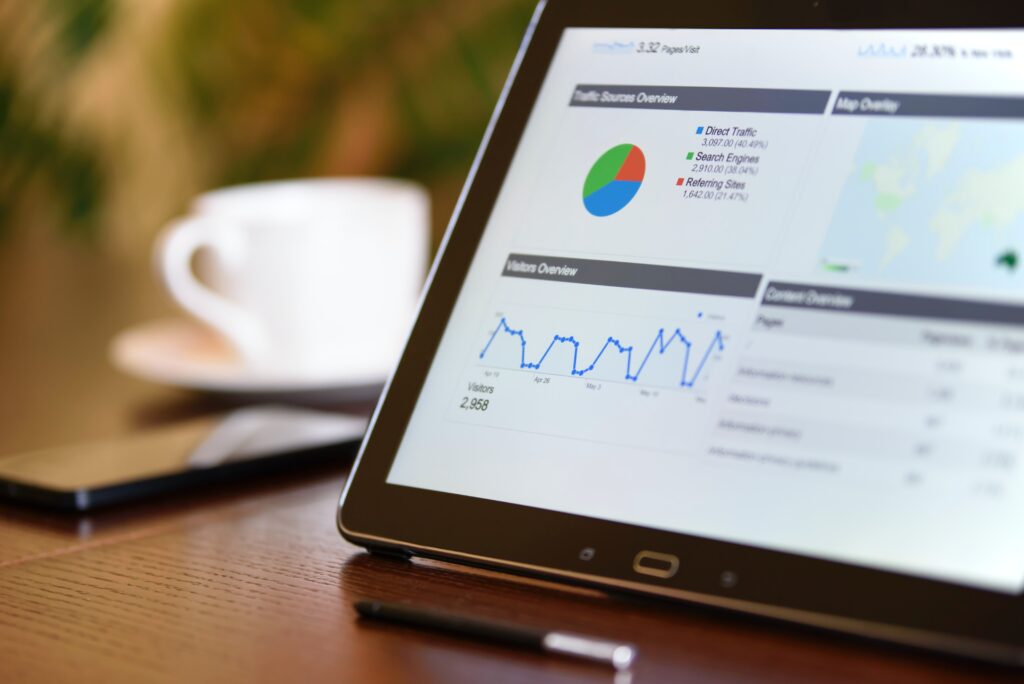It’s no secret that data is the magic ingredient in every successful performance marketing strategy. We’re delving into the nitty-gritty of the user journey and uncovering the data-driven secrets to boost your conversion rates. By understanding the technical aspects and leveraging data, you can create a highly optimised user journey that drives high value traffic and ultimately leads to higher sales.
Understanding the User Journey
At its core, the user journey is a series of interconnected steps a potential customer takes on their path from discovering your brand to making a purchase. Understanding this journey involves diving into the technicalities of user behaviour and engagement at each stage. whether it’s See, Think, Do, Care, AARRR, or The Hook Method – the principles remain steadfast. Let’s break it down:
Discover: This is where users encounter your brand through various channels like organic search, paid ads, social media, or referrals.
Explore: Once users find your website, they explore your offerings, delve into product pages, and assess the relevance of your products or services.
Evaluate: Users compare your products against competitors, read reviews, and seek reassurance that they are making the right choice.
Convert: The ultimate goal is conversion – the user completes the purchase and becomes a valued customer.
Leveraging data to enhance & optimise your conversion rate
When you grasp the different stages of the user journey, you can tailor your marketing efforts accordingly. Numerous tools gather data on your audience’s engagement with every aspect of your Digital Marketing strategy. This data delves deep into your audience’s preferences, enabling you to create a user journey that precisely meets their needs. By aligning with your customers’ journey, you elevate the likelihood of converting them into loyal buyers. So, fasten your seatbelts as we explore the ins and outs of the user journey and how you can use data to curate yours.

Website analytics:
This one is a no brainer. Implementing tools such as Google Analytics or other web analytics platforms provides a wealth of data on user interactions throughout the customer journey. From page views and session durations to engagement and conversion funnels, these tools offer a comprehensive view of how users engage with your website and where potential bottlenecks may occur.
In GA4, you have the ability to track engaged sessions, which are defined by a default duration of 10 seconds.Therefore, if a visitor spends at least 10 seconds exploring your content, they are considered an engaged user. The flexibility to adjust this parameter allows you to define engagement based on your specific criteria.
It raises the question of whether someone spending just 10 seconds on your website can truly be deemed an engaged user. To obtain accurate data, setting this parameter in line with your product or service is crucial. For instance, higher-value products or services may require longer consideration times compared to lower-value ones.
Attribution Tracking for Journey Mapping:
Attribution tracking is a powerful analytical method that provides invaluable insights into user behaviour, facilitating the mapping of the customer journey. By visualising user touch points and interactions across various channels and stages, marketers can identify friction points, drop-offs, and bottlenecks. Armed with this data-driven understanding, they can make enhancements to optimise the conversion process.
This technique revolves around analysing user interactions with content and tracking touch points leading to purchase. Marketers gain a comprehensive understanding of user behaviour and can fine-tune marketing efforts for more targeted and effective engagement throughout the entire customer journey. With attribution tracking, the path to optimising the customer experience becomes clearer than ever before.
Heat Mapping:
Understanding user behaviour on your landing page opens the door to making small yet high-value changes. For instance, if users don’t scroll, it’s essential to keep your Call-to-Action (CTA) and vital information at the top. On the other hand, if users are scrolling to the bottom in search of FAQs or social media handles, it’s crucial to provide easy access to these elements to enhance user experience and engagement.
A/B Testing:
A/B testing allows you to rely on data rather than assumptions or guesswork. By testing different variations of landing pages, ad creatives, and CTA’s, you can identify what aspects of your campaign are truly resonating with your audience, enabling you to identify the most effective combinations that drive higher conversion rates.
To get accurate results, focus on testing one variable at a time. For example, when testing landing pages, keep everything else consistent (such as ad copy and targeting) and only vary the design, headline, or CTA.
Customer Surveys:
Integrating surveys into performance marketing campaigns allows you to gather valuable data directly from your audience. Analyse results to identify patterns and pain points, enabling you to make data-driven enhancements to your campaign and improve conversion rates.
To make the most of surveys, it is important to define clear objectives, target the right audience, keep surveys concise, and consider offering incentives for participation. Continuously gather feedback, and combine survey data with other metrics for a comprehensive understanding of your audience’s journey.
Conversion Tracking:
Tracking conversion events such as purchases, form submissions, or newsletter sign-ups gives you visibility of which marketing efforts lead to actual conversions. This data reveals the effectiveness of various marketing channels and campaigns in driving desired actions.
By analysing event data, you can identify high-converting areas and areas that need improvement, such as effective CTAs and potential conversion bottlenecks. Armed with these insights, you can optimise your campaigns, enhance user experience, and refine marketing strategies to align with user behaviour, ultimately boosting conversion rates and overall performance.
Summary
Mastering the technicalities of the user journey is the secret to unlocking the full potential of your digital marketing efforts. By leveraging data, creating bespoke landing pages, and testing different user journeys, you can ensure a personalised and seamless experience for your customers resulting in more conversions. Remember, understanding your audience and using the right creative and ad copy on the appropriate social platforms are the cornerstones of driving high-value traffic to your landing pages. So, embrace the power of data and optimise your conversion rate!
To learn more about our Amplify Packages for eCommerce and lead generation, contact our team today.
You can find more industry insights, advice and tips on all things business & performance Marketing on the Marketing Freaks Podcast. Listen and Subscribe on Spotify, Apple Podcasts or YouTube




